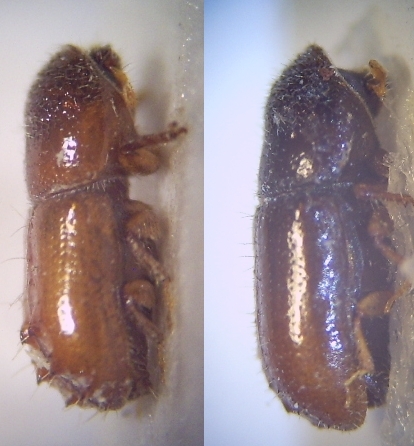Six toothed bark beetle, this 2 mm small beetle belongs to the bark beet
Do not confuse with:
European spruce bark beetle
Six toothed bark beetle (Pityogenes chalcographus). This 2 mm small beetle belongs to the bark beet
The Six toothed bark beetle primarily affects the tops of trees; unlike the European spruce bark beetle (Ips typographus) and the Larch
Six toothed bark beet
Adult Six toothed bark beet
Infestation by the Six toothed bark beetle is often noticed too late. There is no sawdustlike boring dust (frass), as is common in other bark beet
Six toothed bark beet
Where to find
- Conifers
- Norway spruce
- Nordmann fir
- Larch Tree
Control
Difficult to to control; once the needles begin to fall, the tree is unsalvageable. Cutting down trees is the only remedy. In addition, this will prevent damage to any neighboring trees.
Prevention
Provide a bird-friendly environment: birds eat insects including the Six toothed bark beetle.

